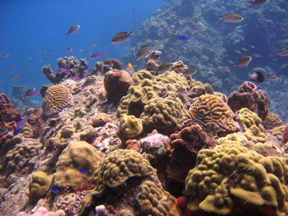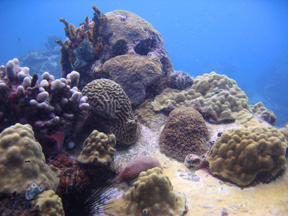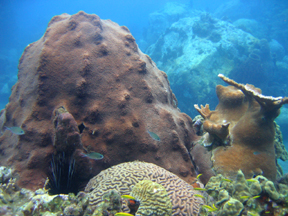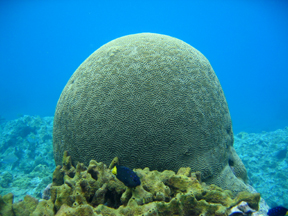|
Coral Habitats on Unconsolidated Rocks |
|
Nevertheless, these habitats provide a great variety of marine life for snorkelers and SCUBA divers. Isolated rocks also attract reef fishes, and the rocky "boulder fields" are ideal nurseries for many fish species. The further away they are from rivers or other sources of chronic sediment input, the more diverse the epilithic community tends to be. The abundant presence of the grazing echinod D. antillarum in some areas, also contributes to reduced overgrowth by algae and a greater abundance of sessile animals. These habitats are also easily accessed and fishing pressure has taken its toll, as can be seen in the paucity of certain fishes and larger size classes of most fish species. Along the west coast, this is the most common coral habitat easily accessible to snorkels. It generally forms a band of up to 30 meters. Depending on the location, sand flats and seagrass beds are found beyond the rocky areas. Along the east coast, the turbulent near-shore waters make for rather barren or oligospecific assemblages and one must go deeper and farther out (SCUBA) to view comparable assemblages.
Not all areas that are characterized by uncosolidated rocky habitats
bare rich sessile epibenthic communities. In fact, the vast majority
of such near-shore habitats harbor communities dominated by encrusting
calcareous red algae or turf algae, and few sponges, corals, polychaetes
and tunicates. |
|
|
INDEX | INTRODUCTION |REGIONS | HABITATS | SPECIES | STATUS | CONTRIBUTORS | REPORTS
Institute
for Tropical Marine Ecology ITME Inc., P.O. Box
36, Roseau, Commonwealth of Dominica.
ITME
is a not-for-profit institution for environmental education and research.



